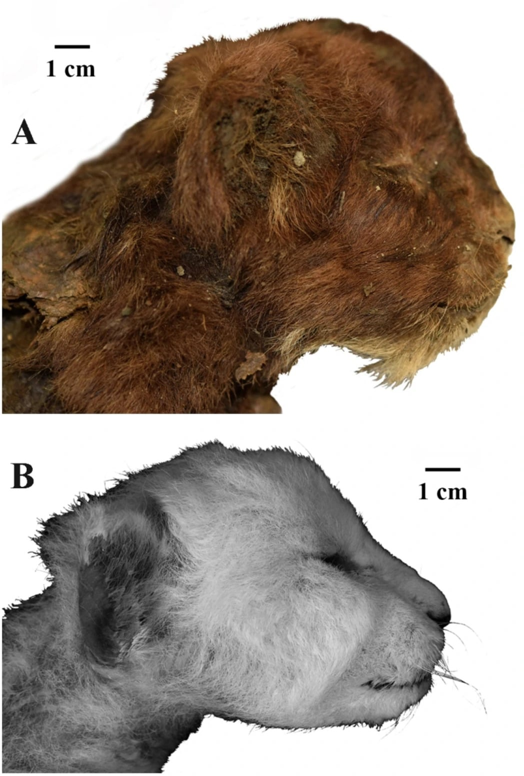Siberian paleontologists have detailed the discovery of a saber-toothed kitten mummy dating back to the late Pleistocene era.
In the permafrost of Yakutia, frozen mummies of ancient animals have long been discovered. Last summer, Naked Science reported on a study of the internal organs of a wolf that lived over 40,000 years ago, found by local residents at a depth of 40 meters. The conditions of the permafrost preserved both the predator's fur and the contents of its stomach. Mummified representatives of megafauna, such as woolly rhinoceroses and mammoths, have also been found, notably the famous woolly mammoth calf Yuka.
Four years ago, in the Abyysky district of the Sakha Republic (Yakutia), a frozen mummy of a large feline cub was discovered near the Badyarika River (a tributary of the Indigirka). The head and the front part of the body with the paws were preserved. Incomplete bones of the pelvis and legs were found frozen in ice. Radiocarbon analysis of the fur revealed that the cub is 31,808 ± 367 years old, indicating that the animal lived during the late Pleistocene. Previously, two mummies of cave lion cubs of approximately the same age had been found in Yakutia.
Paleontologists from Moscow, Yakutsk, and Novosibirsk recently published a detailed description of the skeleton and appearance of the Badyarika cub in the journal Scientific Reports. The mummy was scanned using a tomography machine, and the species identification was established based on analyses of the teeth and skull. Additionally, the skeletal parameters of the cub were compared with those of a lion cub (Panthera leo) of the same age.

The emerging milk teeth of the cub indicated to researchers that it was no more than three weeks old. The front half of the body, along with the paws, was covered with fur measuring two to three centimeters in length, and even vibrissae were preserved on the upper lip, mostly broken.
On the well-preserved rounded paws, the pads and sharp curved claws, resembling those of lion cubs, survived. They varied in length across different toes, ranging from seven millimeters to 10.4 millimeters. According to the authors of the article, the wide paws and large, almost square pads (the wrist pad was absent) allowed the creature to walk on snow, while the small ears may have been an adaptation to the cold.
As the researchers note, most fossilized homotherians from the late Pleistocene have been found in North America, although the latest representative was long dated to deposits aged 300-320 thousand years. The appearance of the extinct predator was also a matter of debate. New data showed that key body features, such as a short torso and long limbs, appear already at three weeks of age.
Based on the characteristics of the lower jaw, teeth, and neck (which is longer and twice as thick as that of a lion cub), specialists classified the found cub as belonging to the genus of saber-toothed homotherians (Homotherium fabrini). However, after comparing it with a specimen of Homotherium latidens from Europe, the priority shifted, and paleontologists attributed the mummy to this taxon. This discovery became the first evidence of the presence of the species H. latidens in Asia.